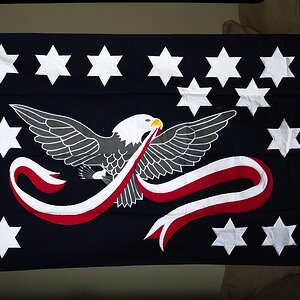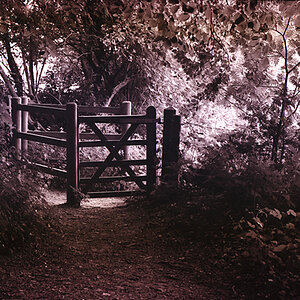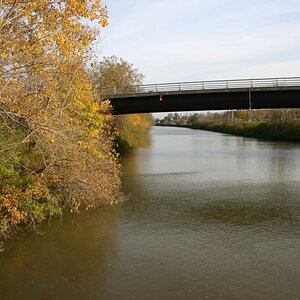elemental
TPF Noob!
- Joined
- Feb 6, 2008
- Messages
- 646
- Reaction score
- 3
Alright, for those of you who have pieced this together through various comments and explanations, I've been "raised" on a little over a year of DSLR shooting (my first real camera), but lately I've been shooting a lot of film (and not much digital). My stuck-in-the-middle-of-nowhere situation has had me shooting Kodak 400CN, which is black and white but processes as C-41. I just picked up my second developed roll from Wal-Mart (the only place anywhere near here that will touch film), and, well, the prints look a little funny. These are the scans they gave me on CD, so I'm not sure if they're from the positives or the negatives (I hope the latter, but this is Wal-Mart). It seems they're in a sort of "greenscale." I didn't notice this with the first roll, which was developed at Ritz. If anything, those seemed a little pink. Anyway, here's my question: Why?
A few possible answers come to mind (in order of likelihood in my mind):
1. Wal-Mart and C-41 machines in general suck and are inconsistent
2. This is a characteristic of the film
3. It has something to do with the fact that this film was exposed to a lot of heat, both before and after being shot (it was a hot day).
Thank you in advance, film gurus.
Before and after a grayscale conversion in Lightroom (just clicked "grayscale," no editing):

A few possible answers come to mind (in order of likelihood in my mind):
1. Wal-Mart and C-41 machines in general suck and are inconsistent
2. This is a characteristic of the film
3. It has something to do with the fact that this film was exposed to a lot of heat, both before and after being shot (it was a hot day).
Thank you in advance, film gurus.
Before and after a grayscale conversion in Lightroom (just clicked "grayscale," no editing):





![[No title]](/data/xfmg/thumbnail/37/37604-7ad625e983f92f880eb65a264eeef5e4.jpg?1619738148)



![[No title]](/data/xfmg/thumbnail/37/37126-93feffeca0e9e6ad893962c03a7a341e.jpg?1619737884)



![[No title]](/data/xfmg/thumbnail/41/41492-467958db3420bceb7ab410a12dcc681f.jpg?1619739819)
